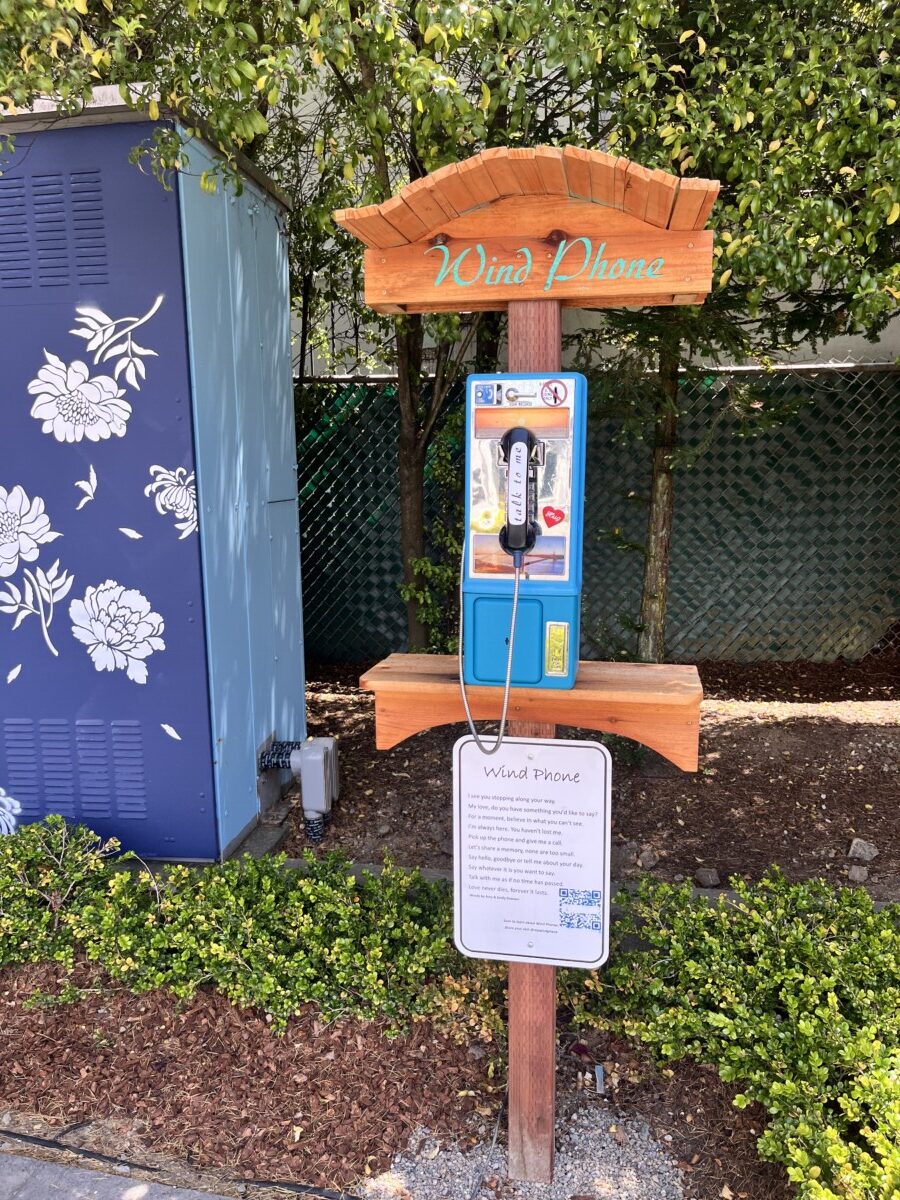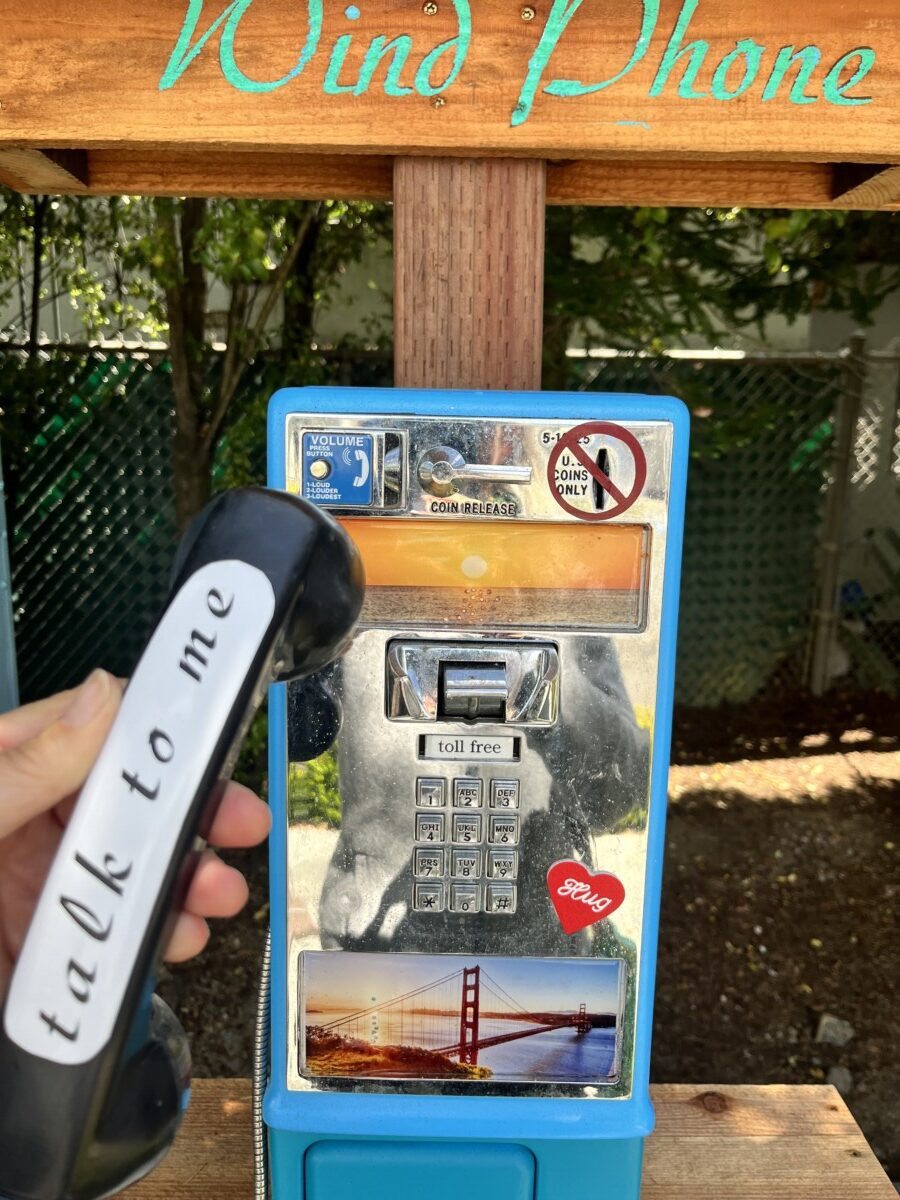Built in 1898, the San Francisco Columbarium was originally part of the 167 acre Odd Fellows Cemetery. It survived the 1906 earthquake, but four years later the City banned cremation (I couldn’t find out why!) so their crematory was shut down. Another four years later, the City directed that all human remains be moved to new graveyards in Colma (Expedition 36) so the entire graveyard was evacuated.
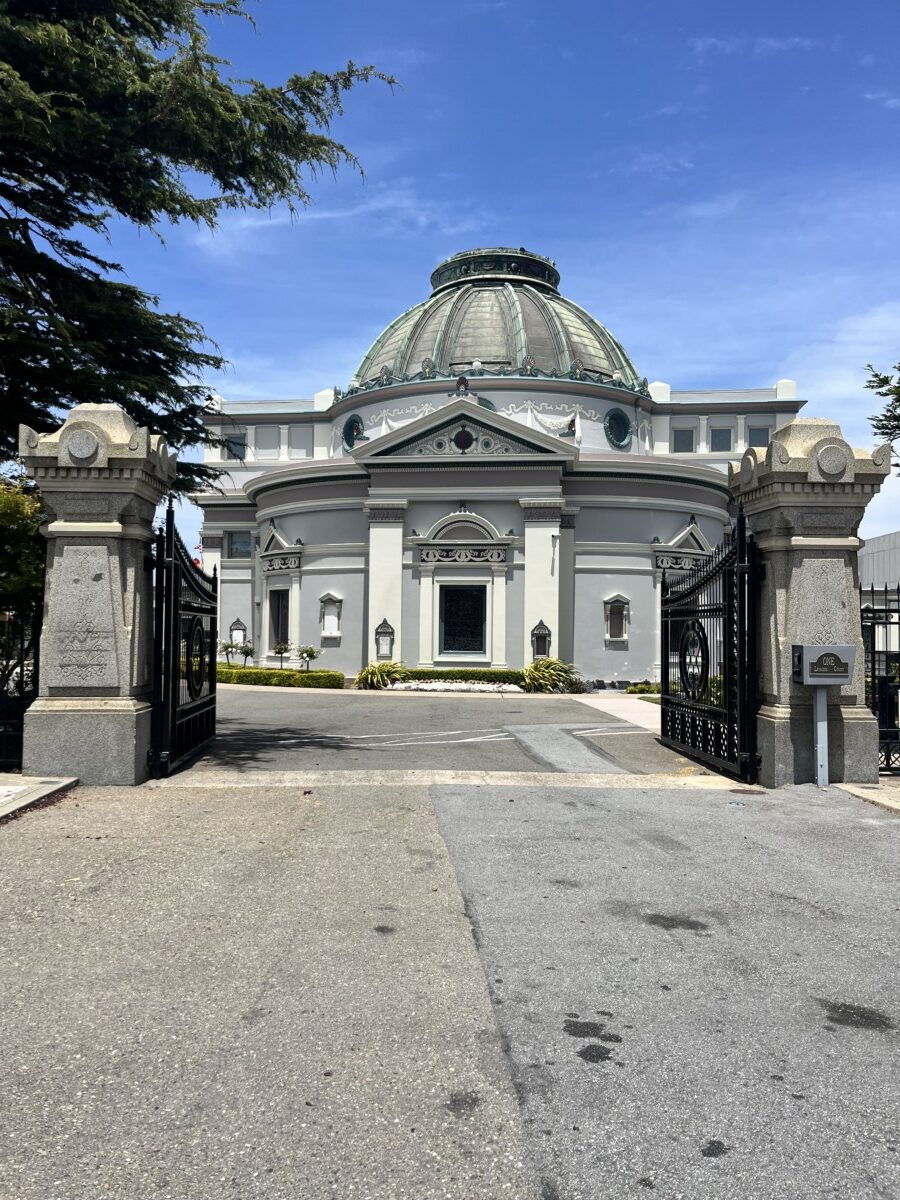
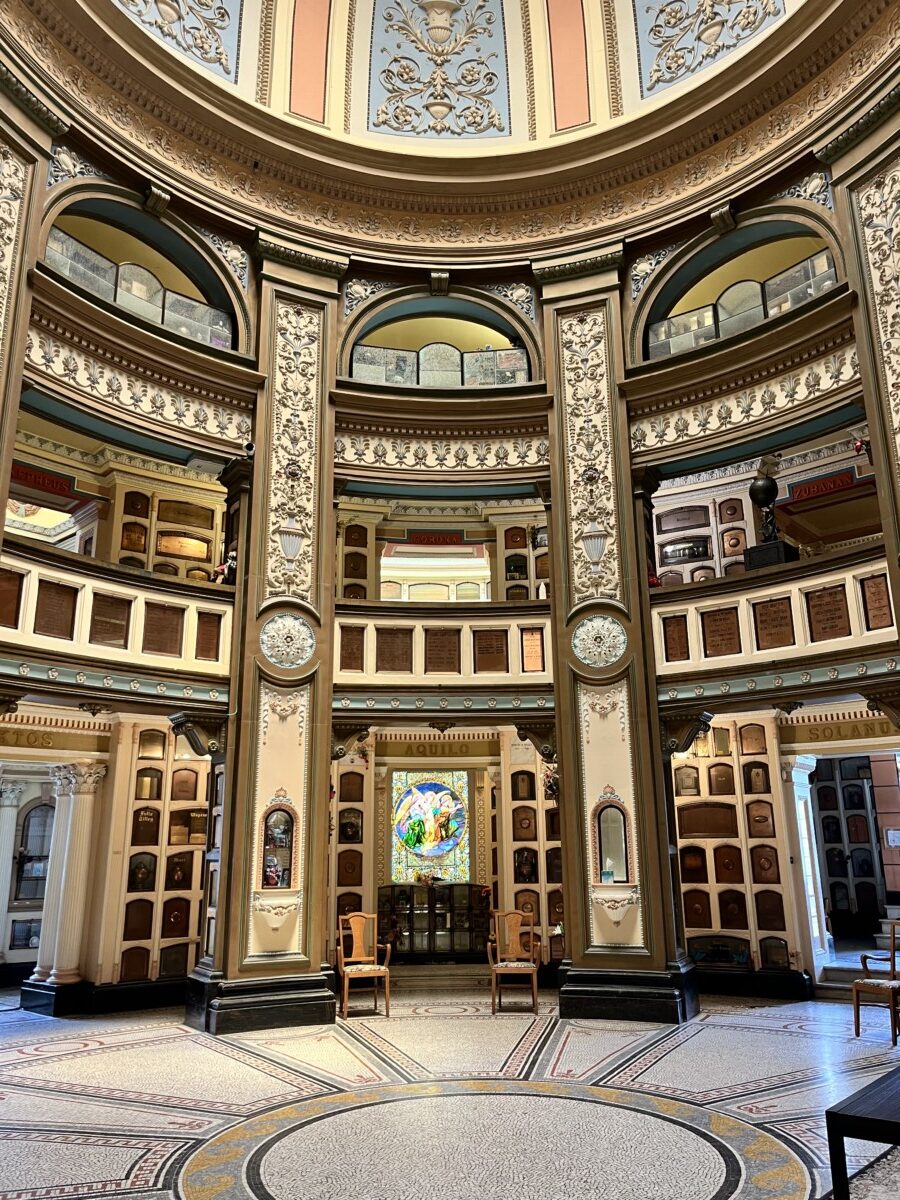
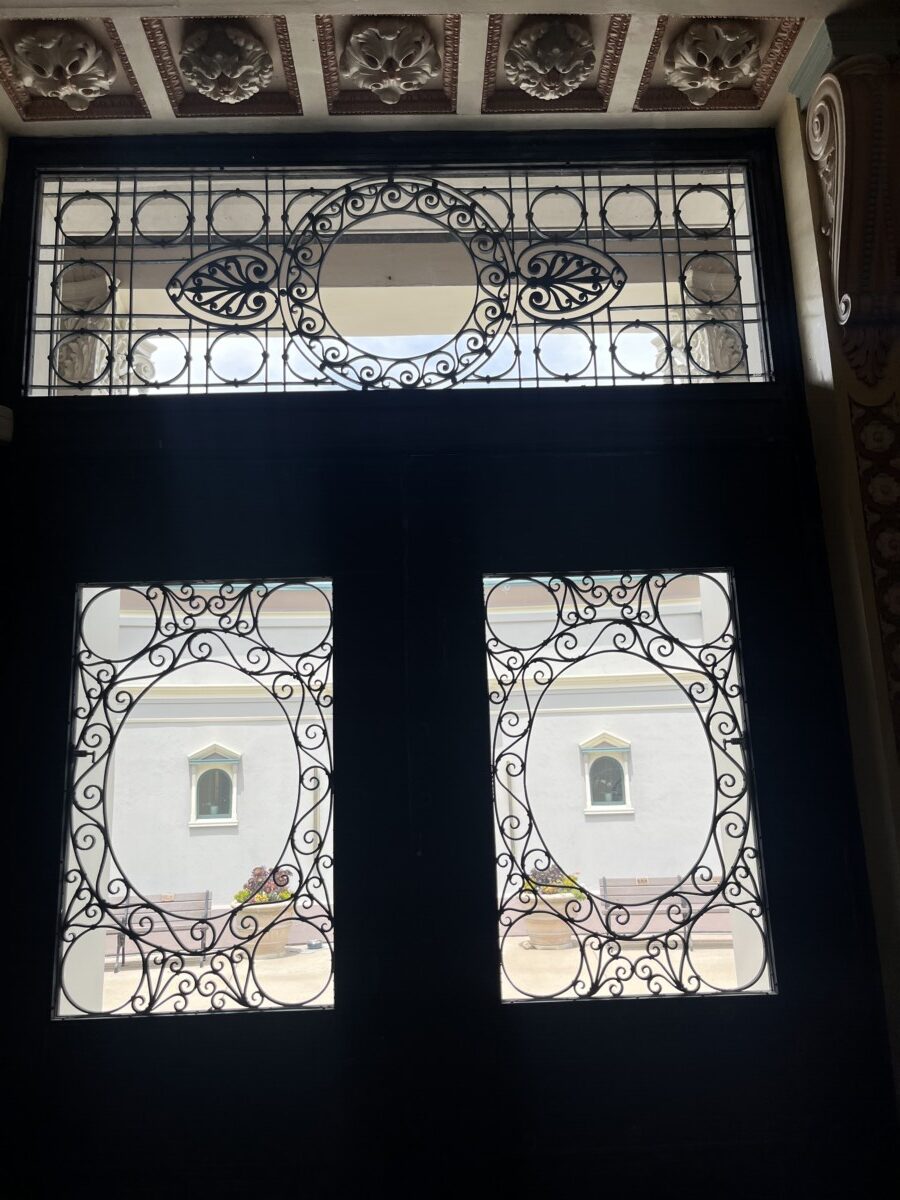
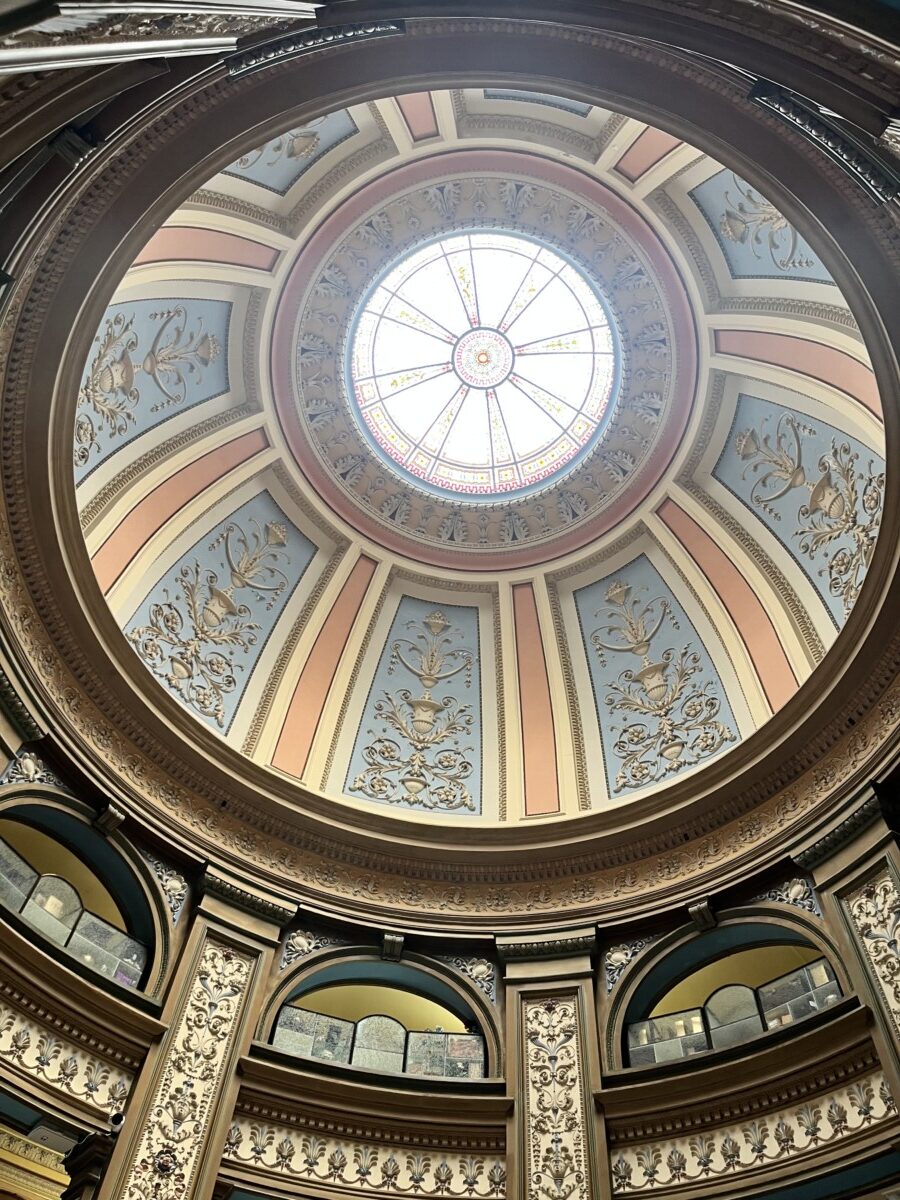
The cemetery extended several blocks south of the columbarium to include the current Rossi Playground. To the east is Lone Mountain, which was surrounded by cemeteries. Laurel Hill lay to the north, Calvary to the east, Masonic (source of the name of Masonic Avenue) to the south and Odd Fellows to the west.
Sidebar: When the City Center mall was being built on Geary Blvd. in 2018, dozens of grave markers were unearthed! (opensfhistory.org) As I noted in Expedition 36, the removal of the dead to Colma was chaotic and poorly executed.
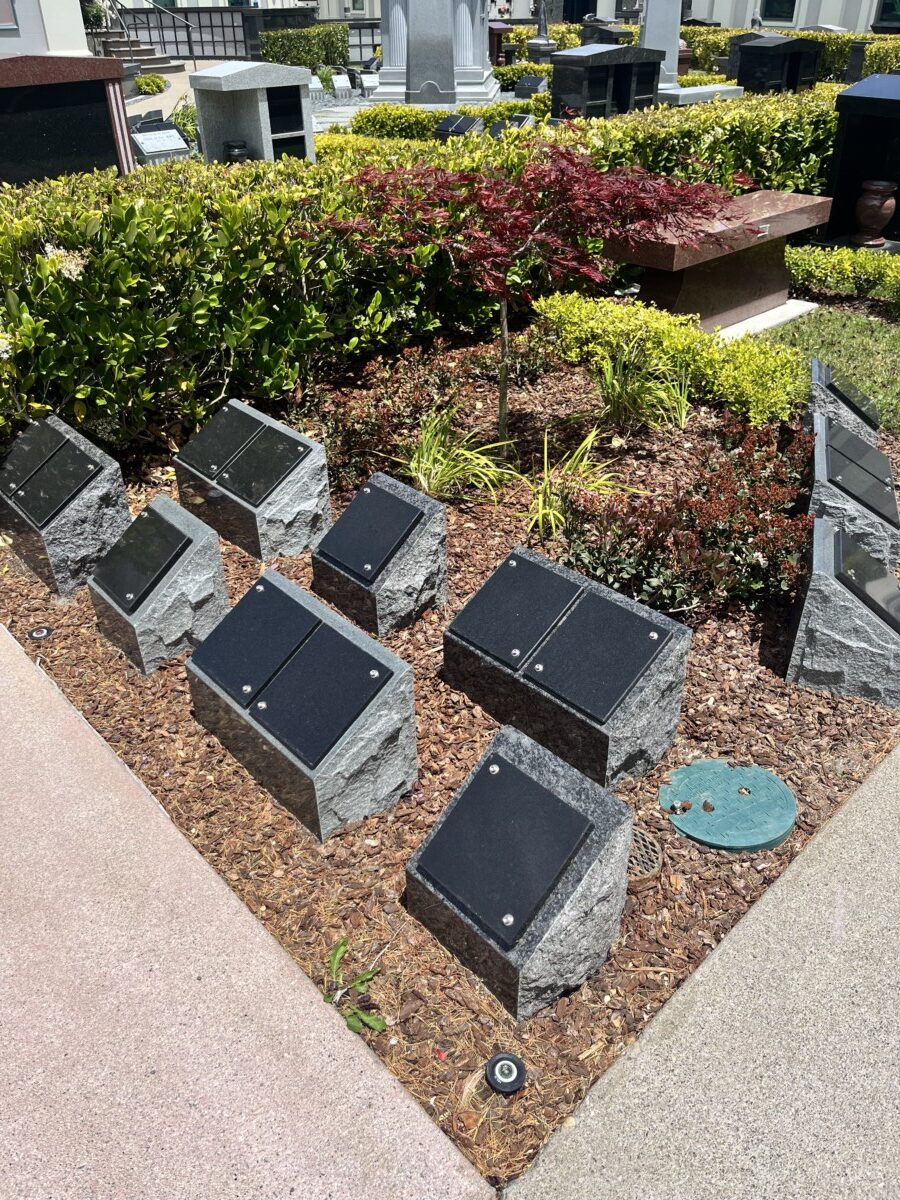
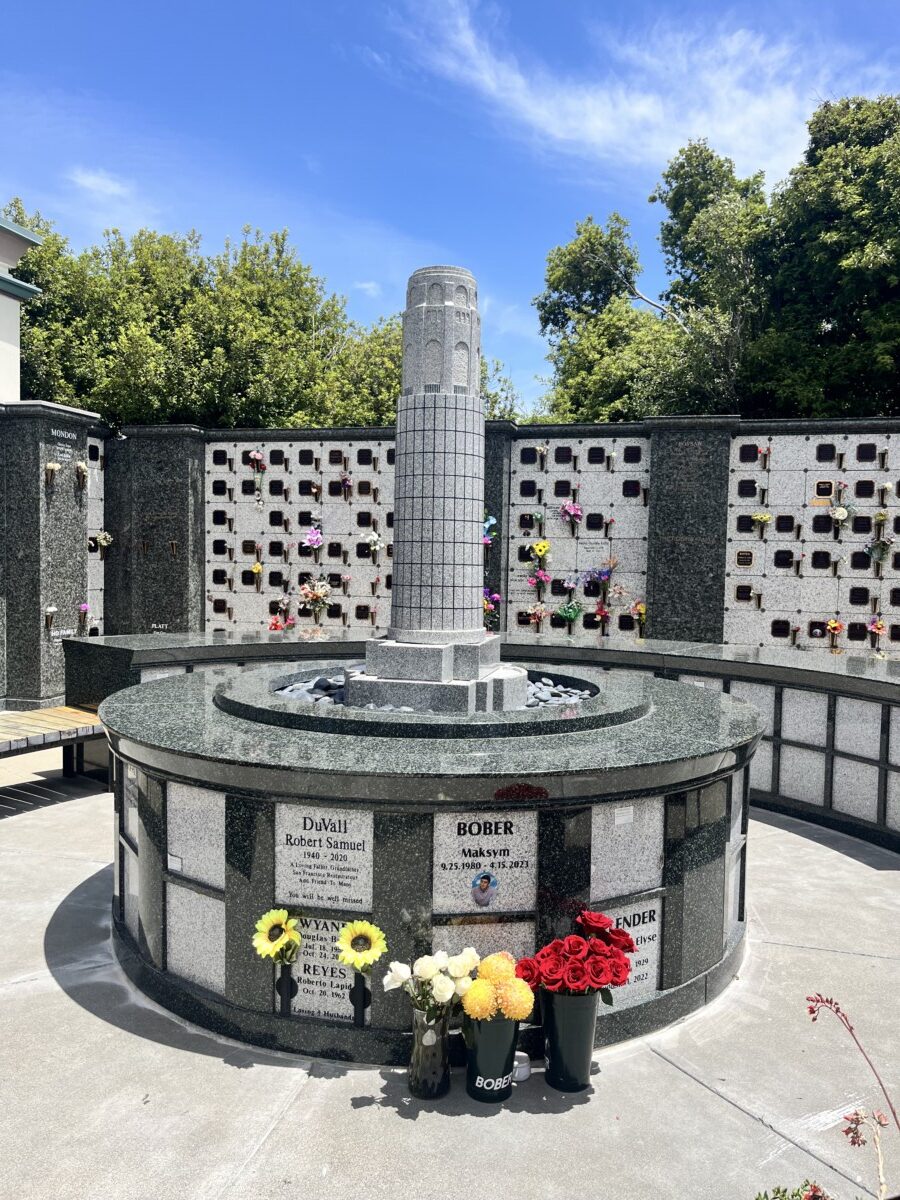
There still are spots available at the columbarium! Quite a few places outside, many in the area presided over by a sculpture of Coit Tower. Inside I saw many niches with “reserved” signs on them. It’s a beautiful place to be buried, and the only place within city limits where it’s still possible.
I realize one thing I love about columbaria like this one is that many of the niches are dioramas, displaying items dear to the departed and their families. So fascinating! I also love the ornate urns, like these in a niche with tasseled fabric wall covering. The stained glass is also gorgeous.
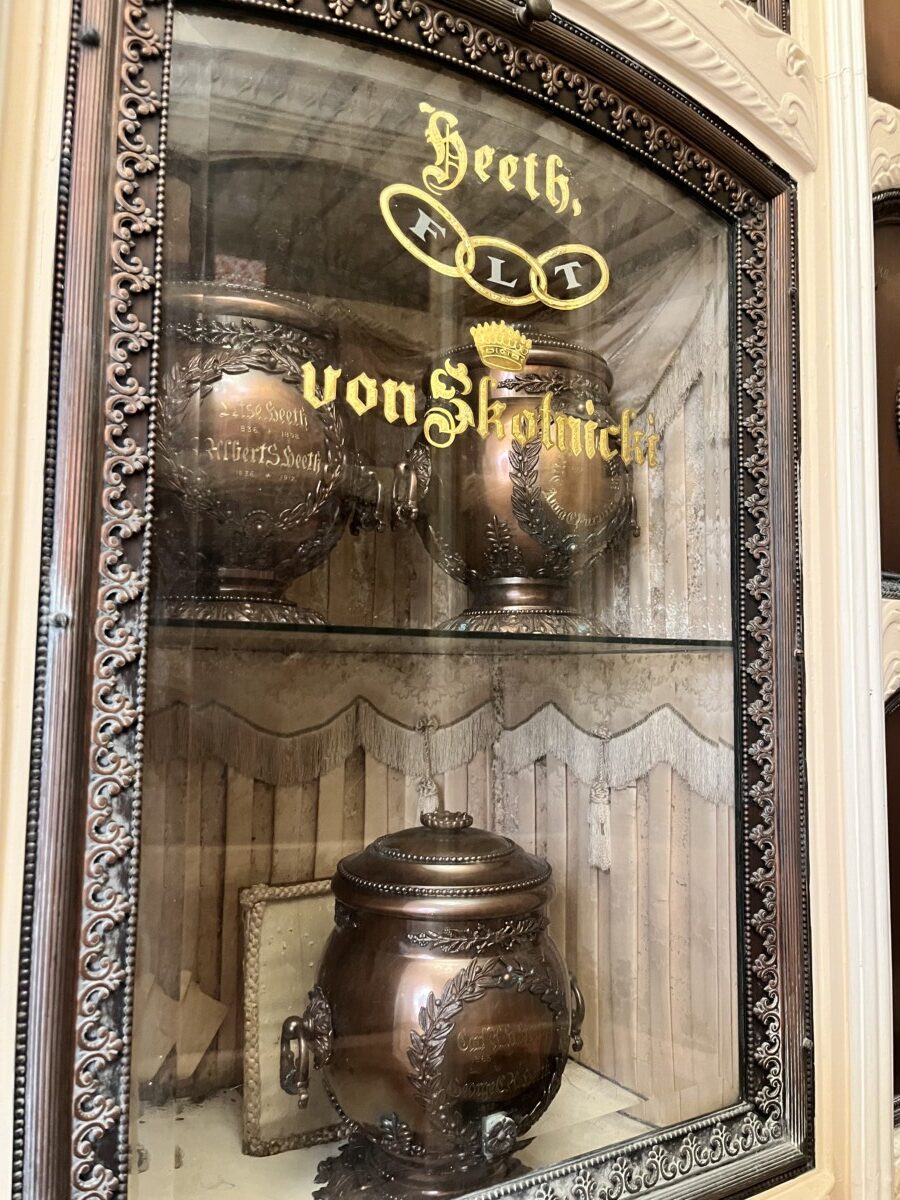
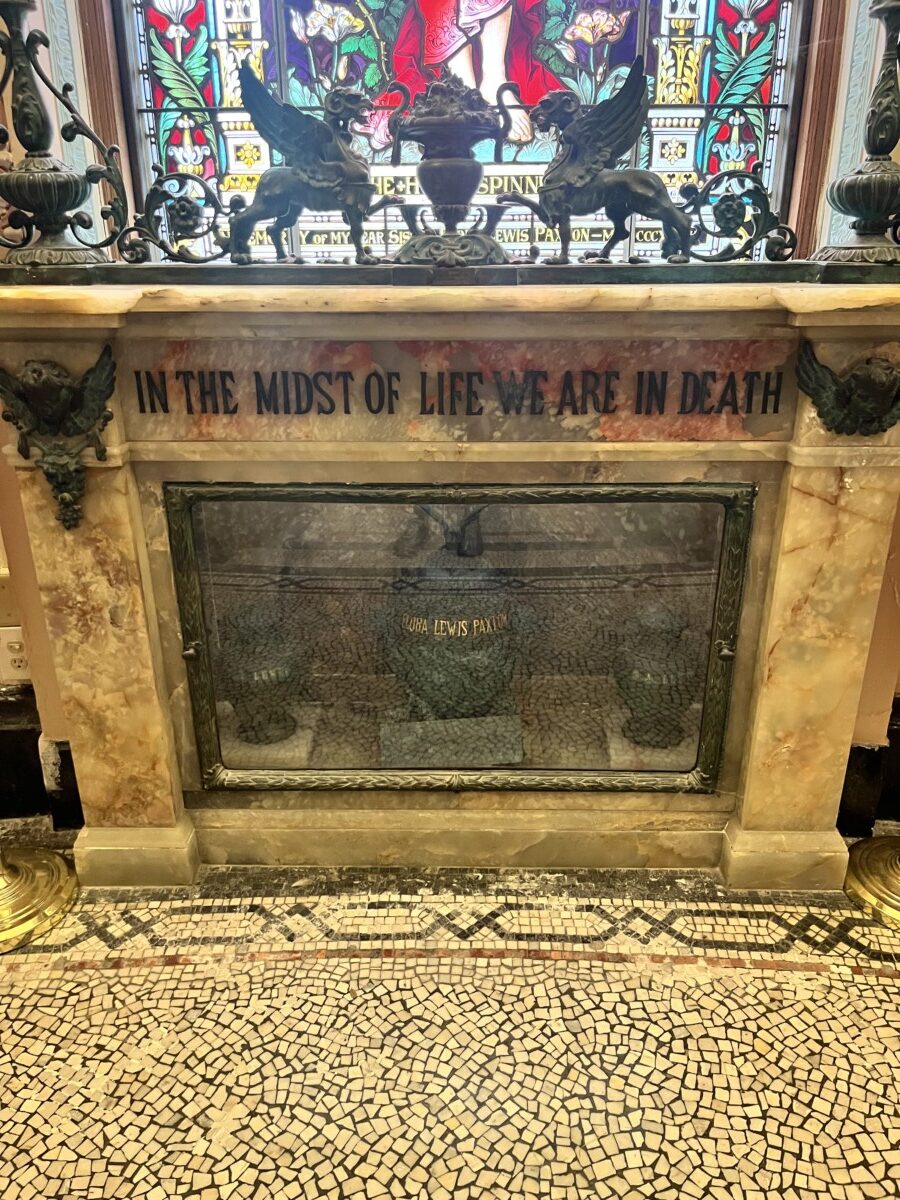
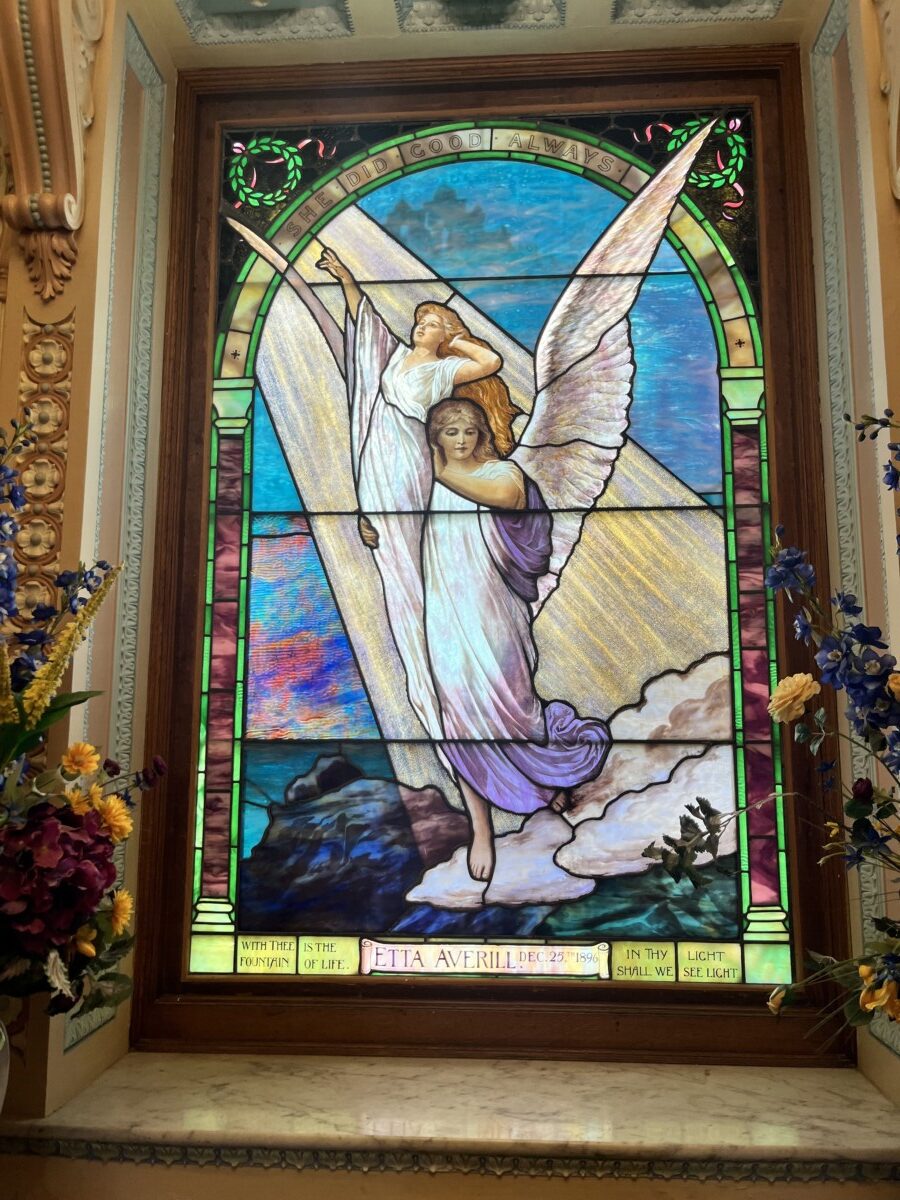
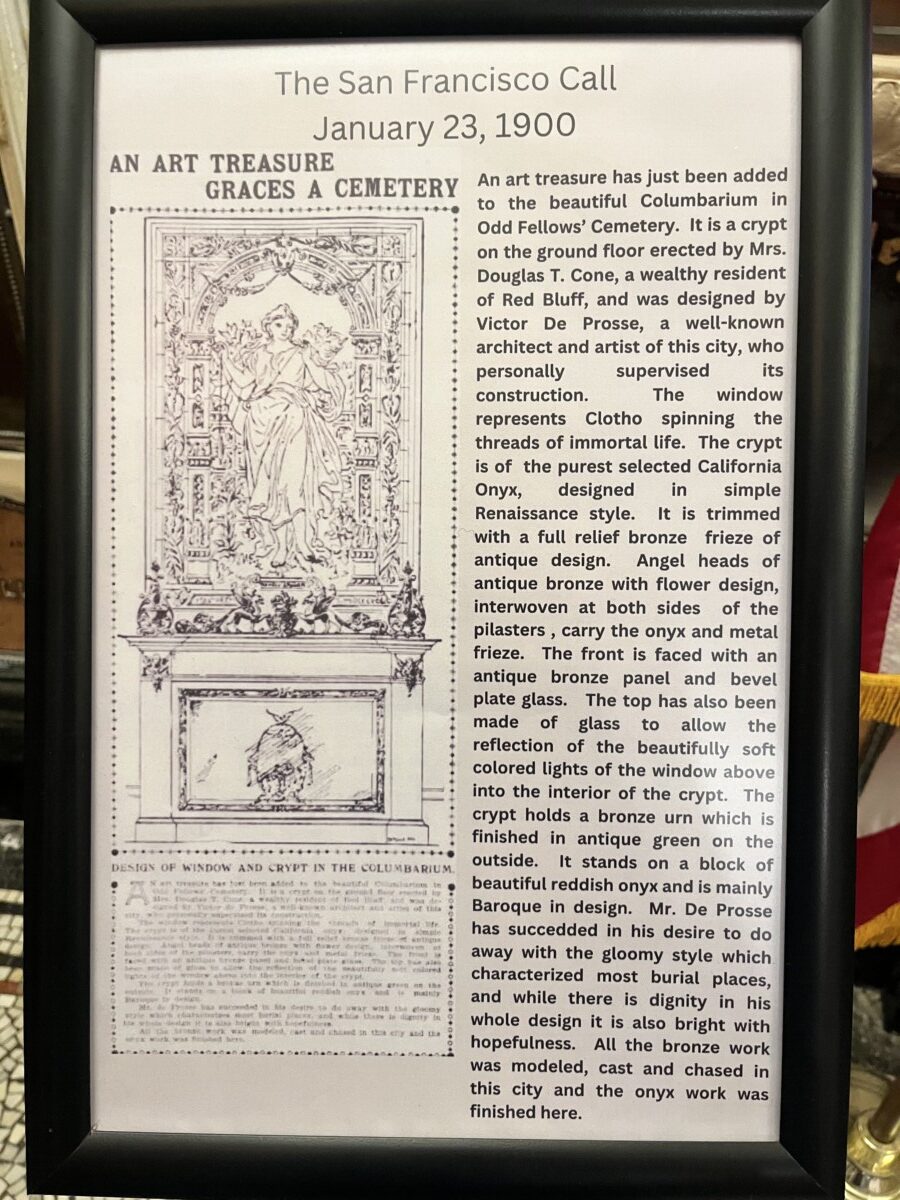
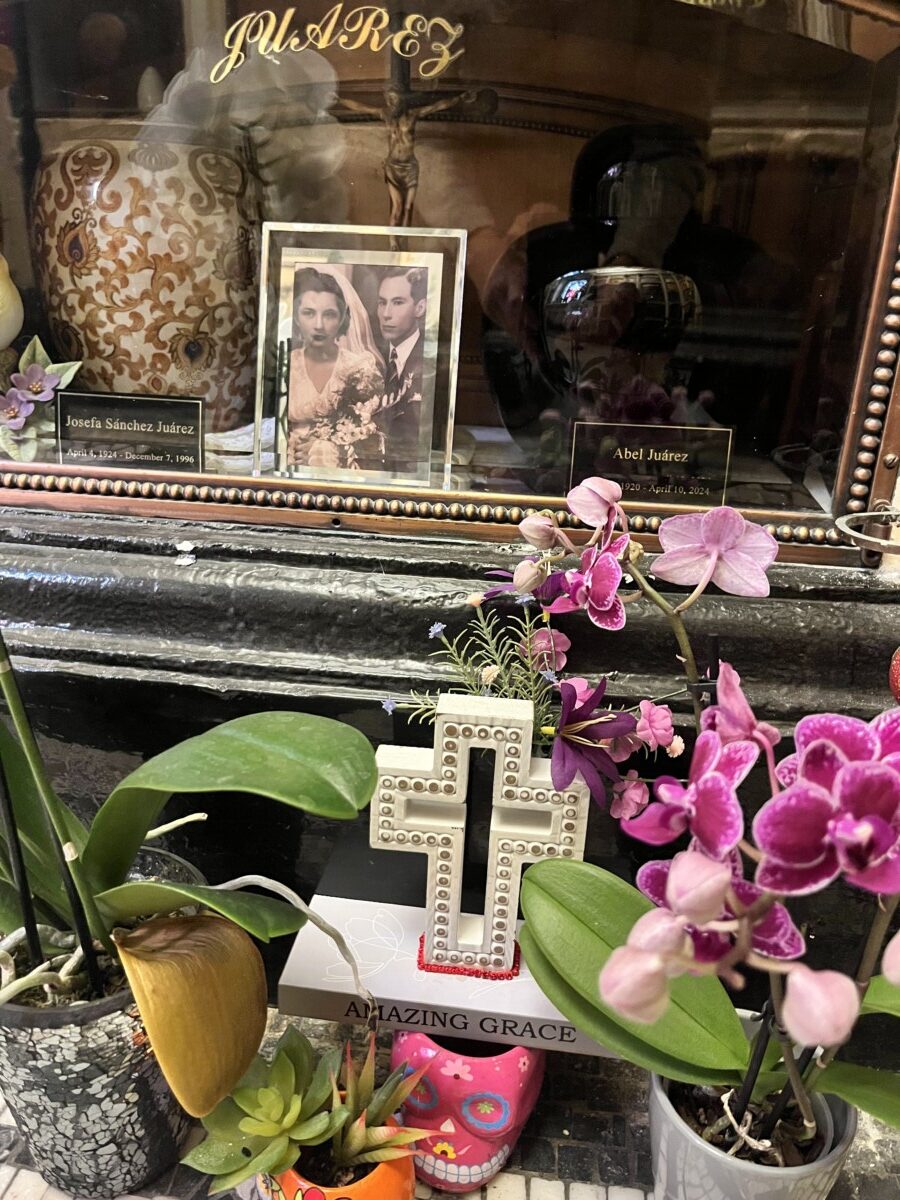
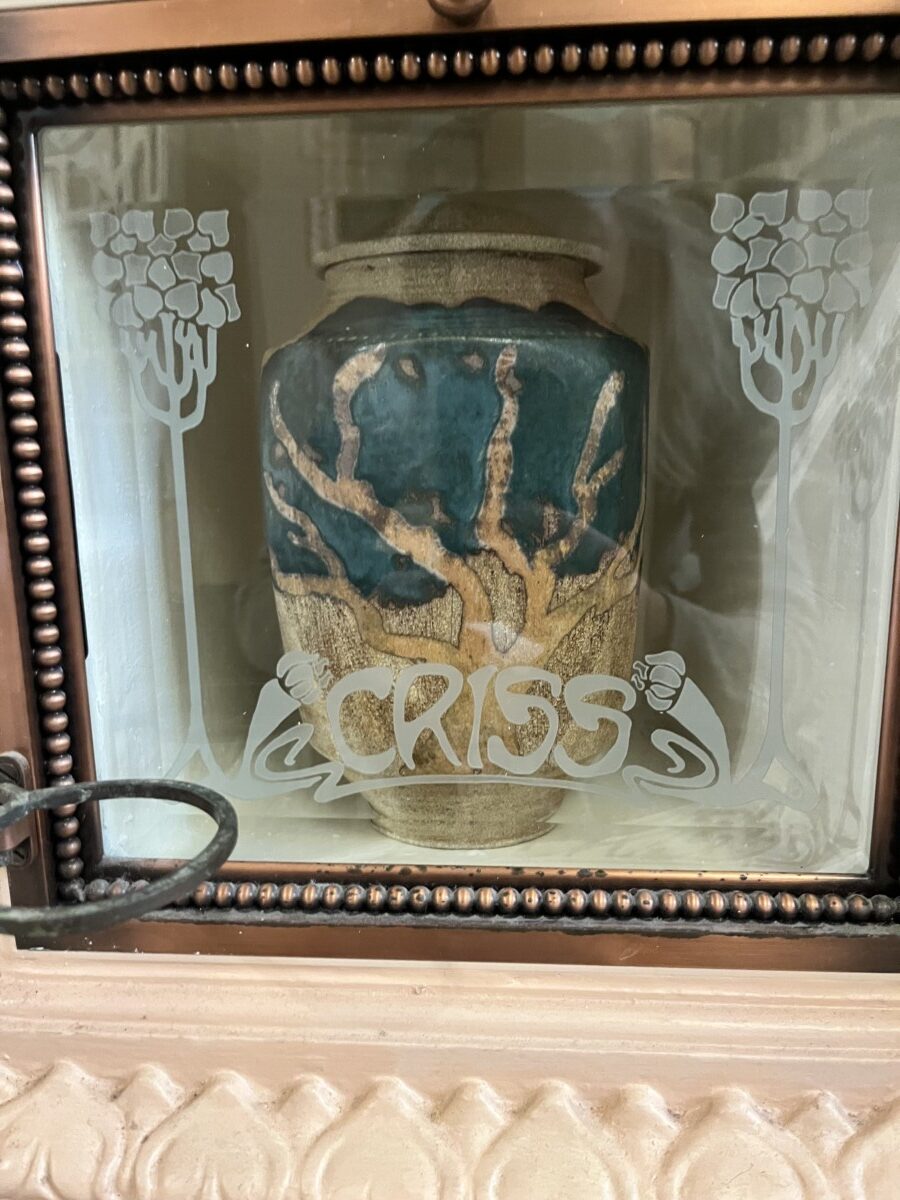
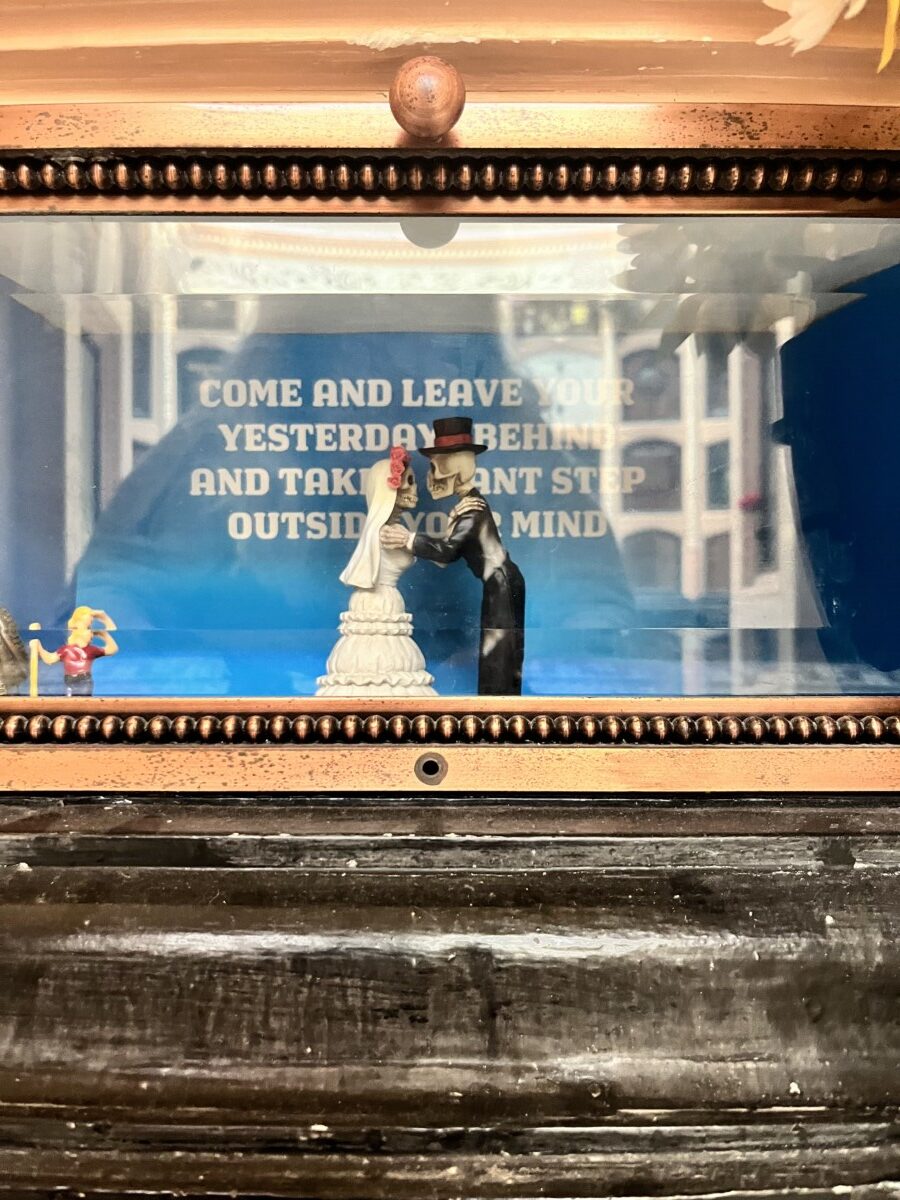
I was charmed by one niche that had a collection of cards sent to the deceased over the years, and a small journal where people wrote touching notes. Tucked into the frame of a niche with a W.C. Fields bust is a card saying “We still miss you terribly. All things considered, we wish you were in Philadelphia.”
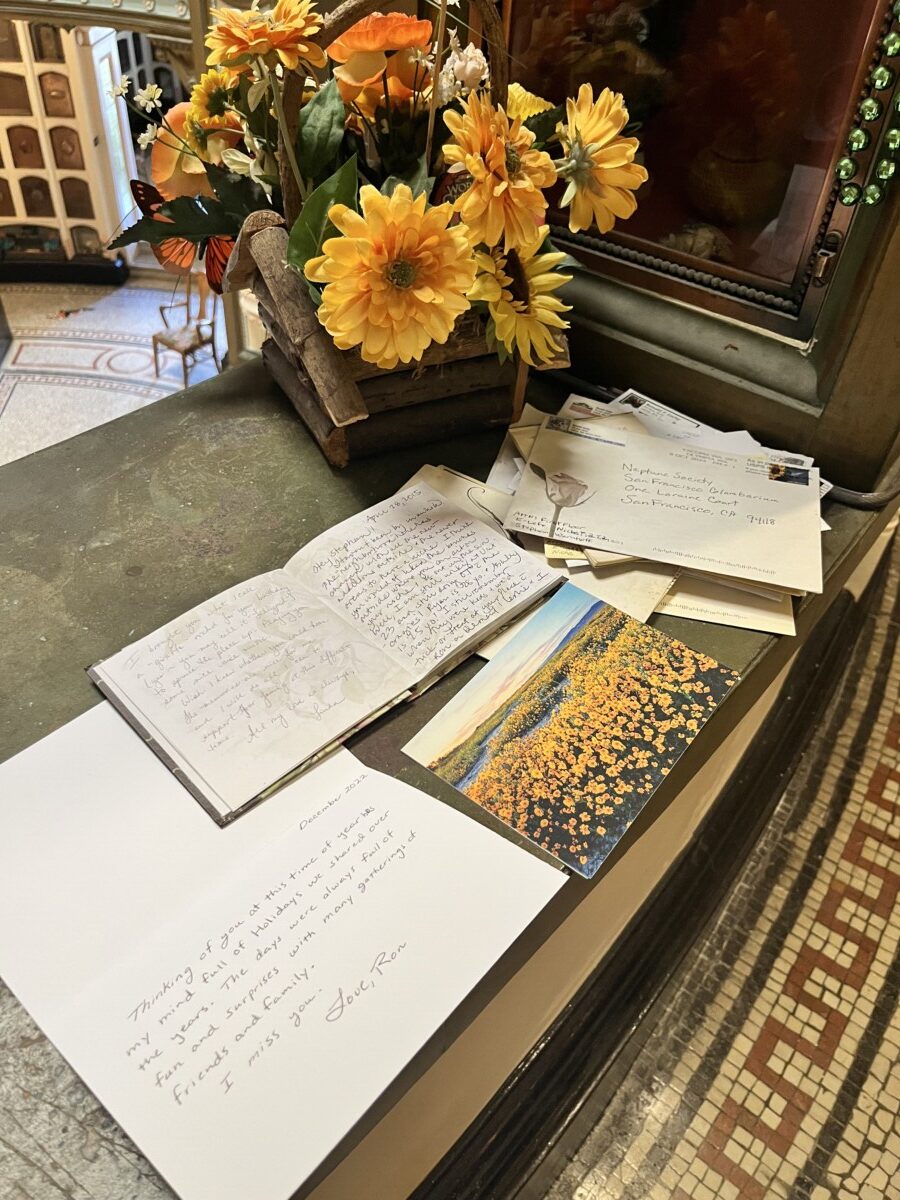
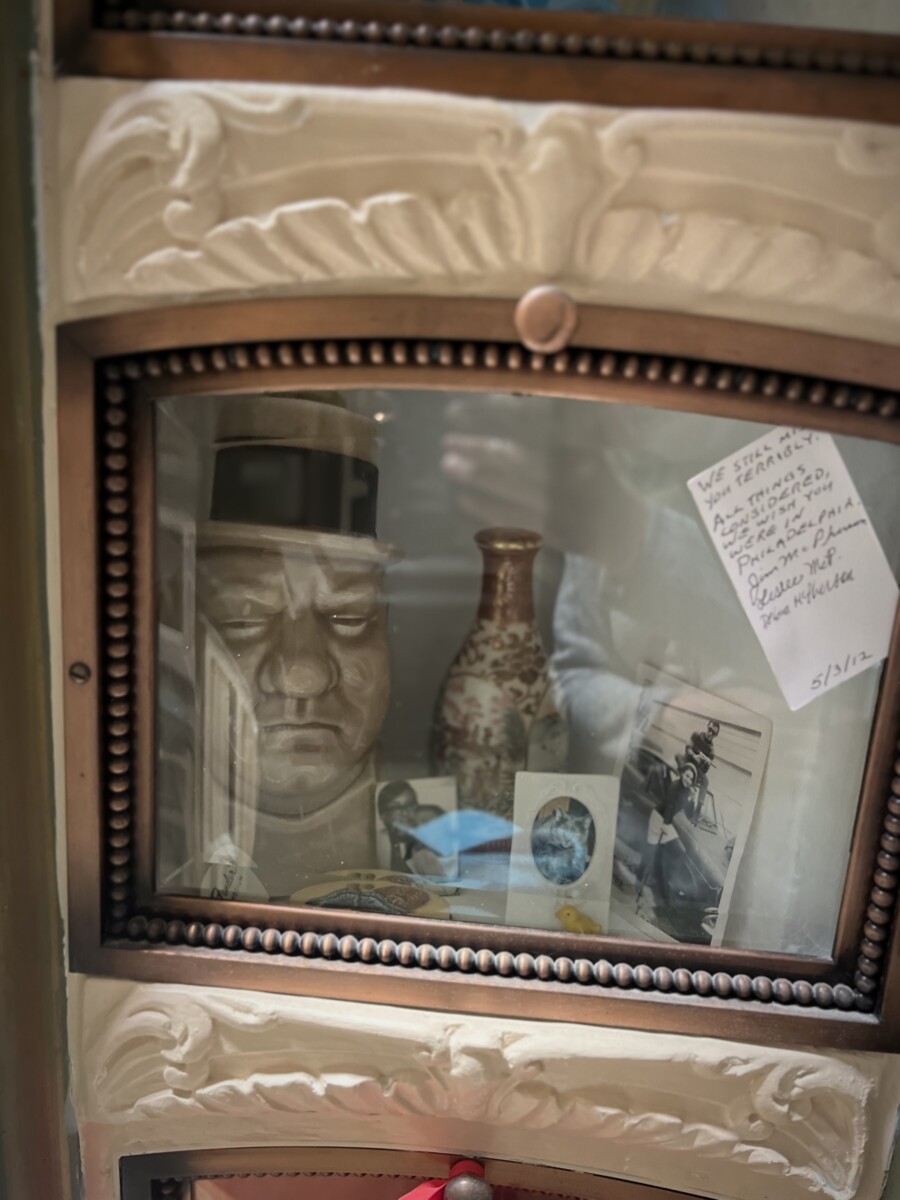
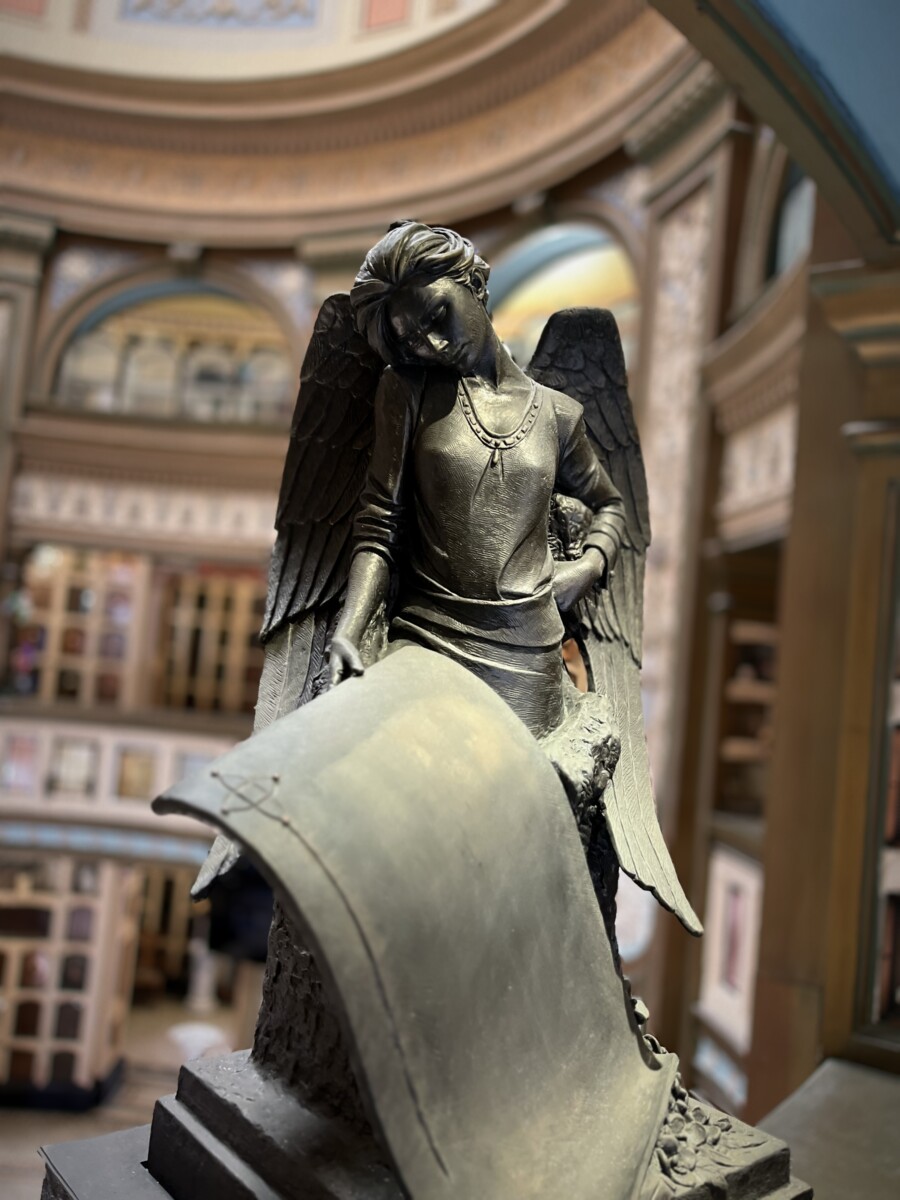
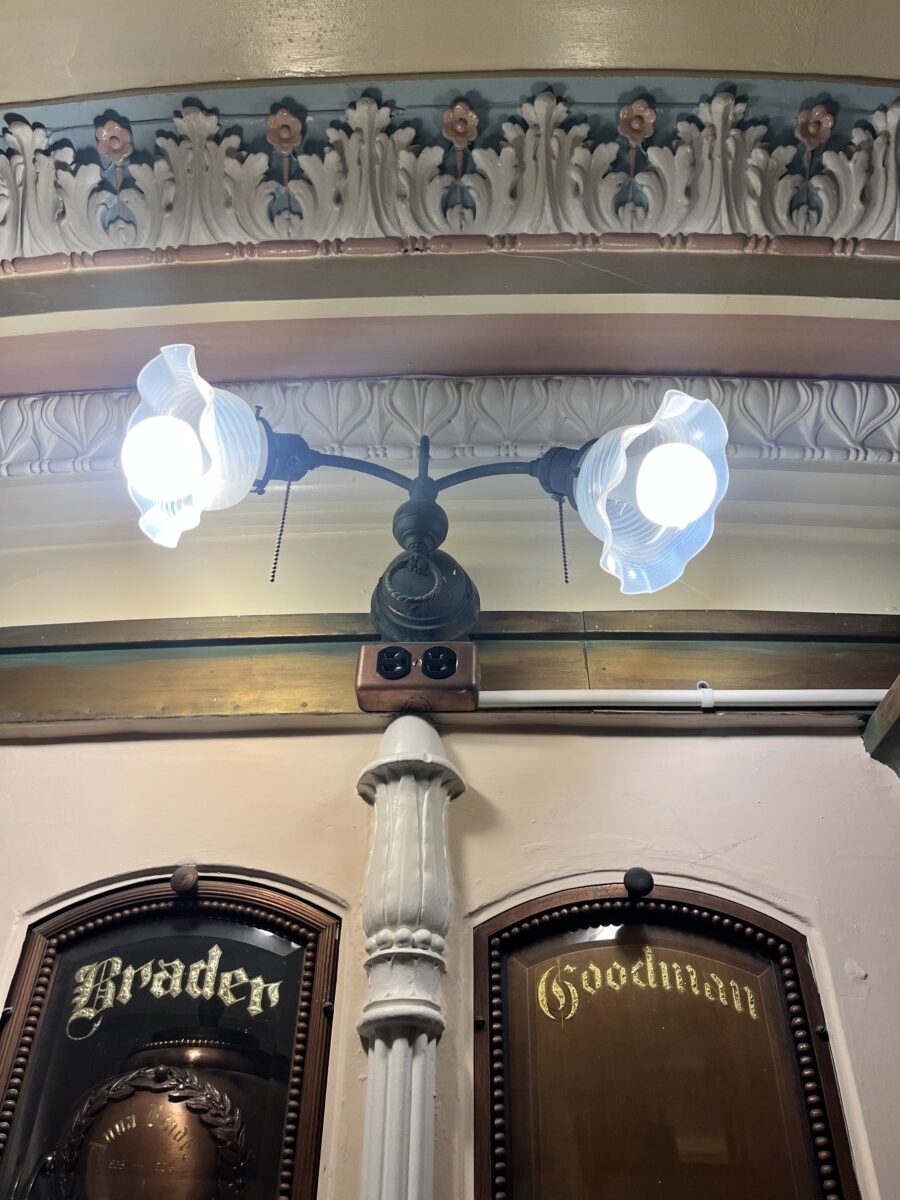
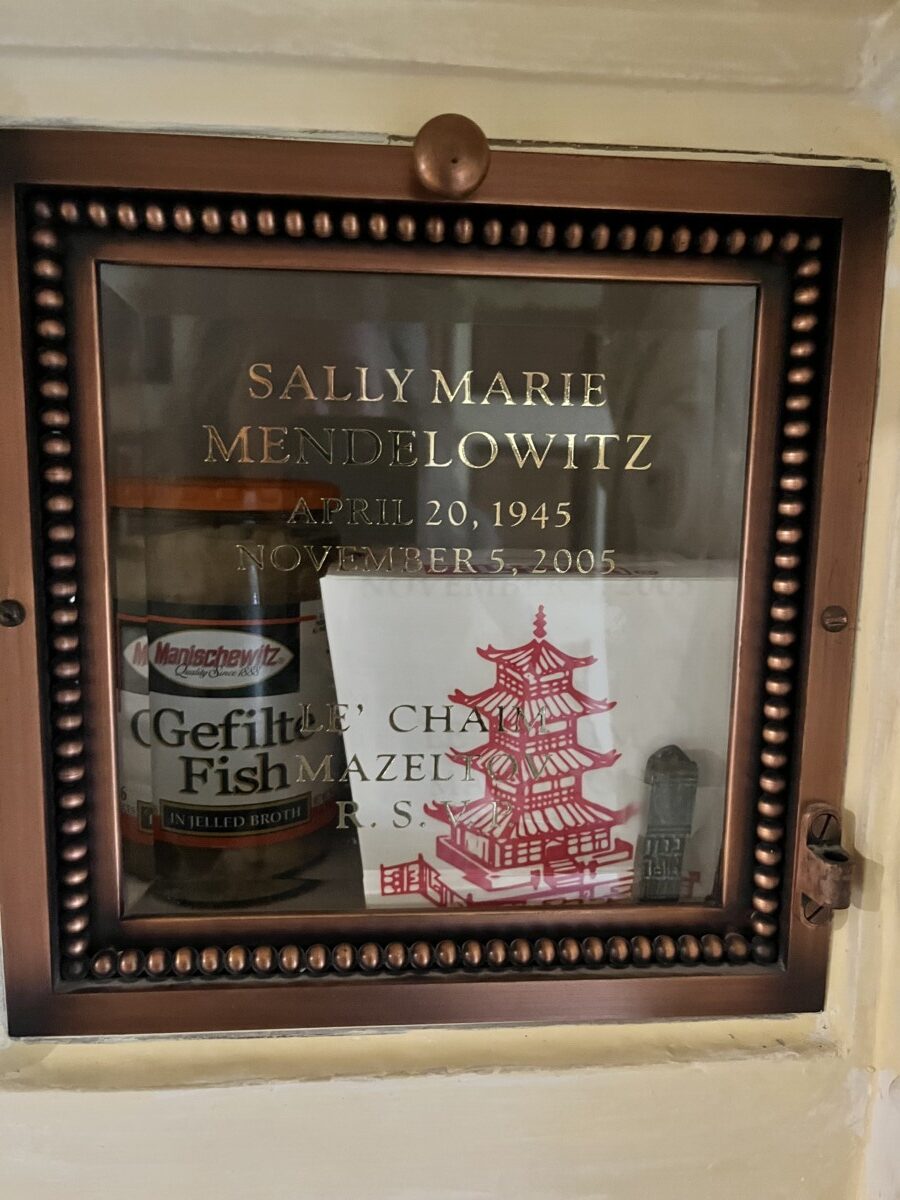

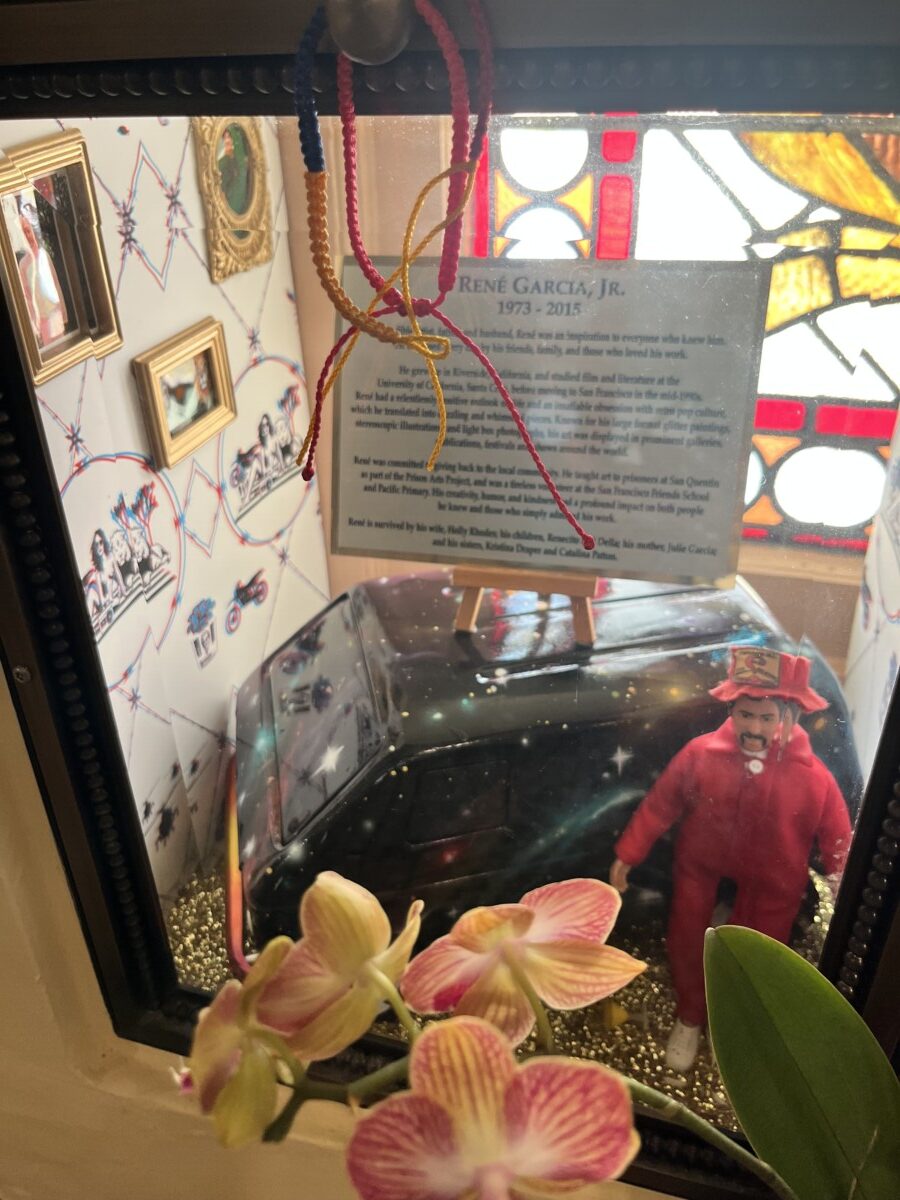
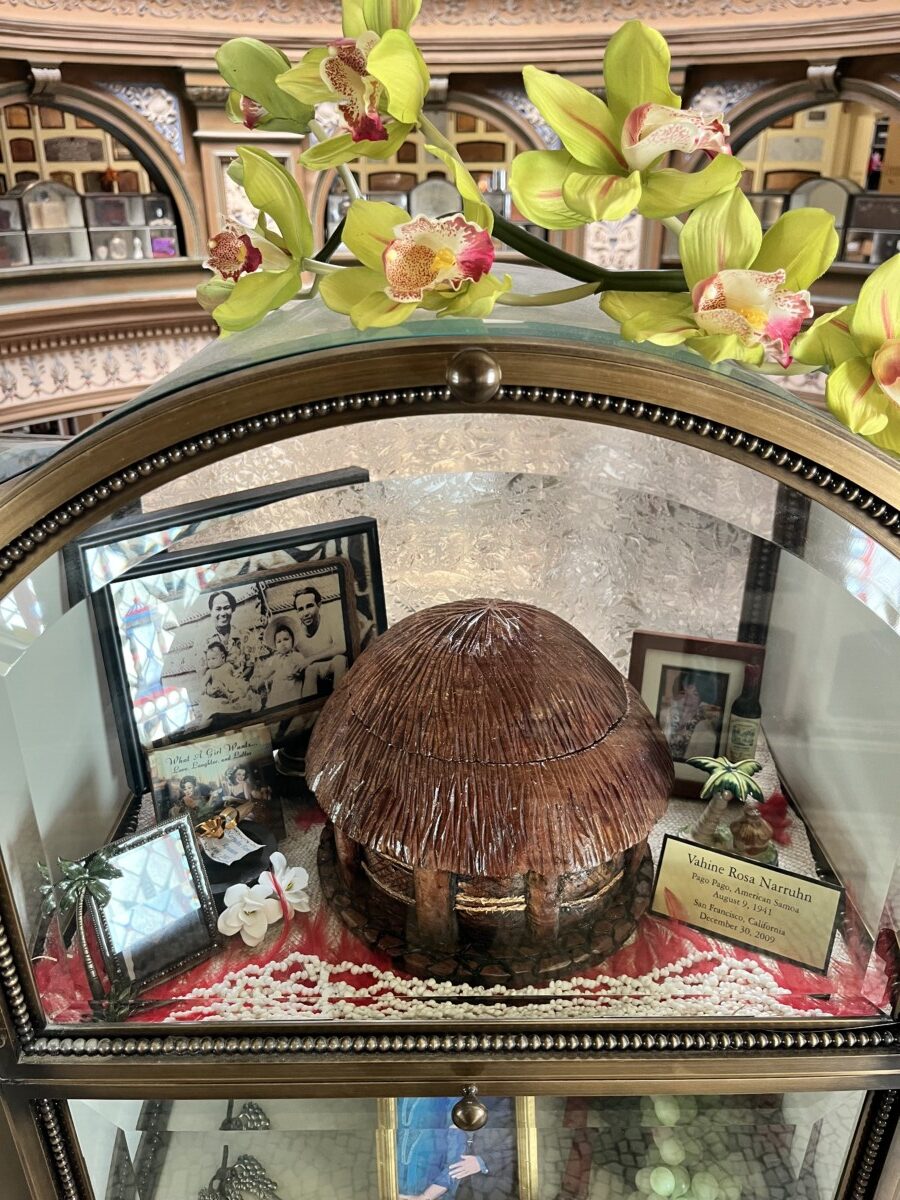
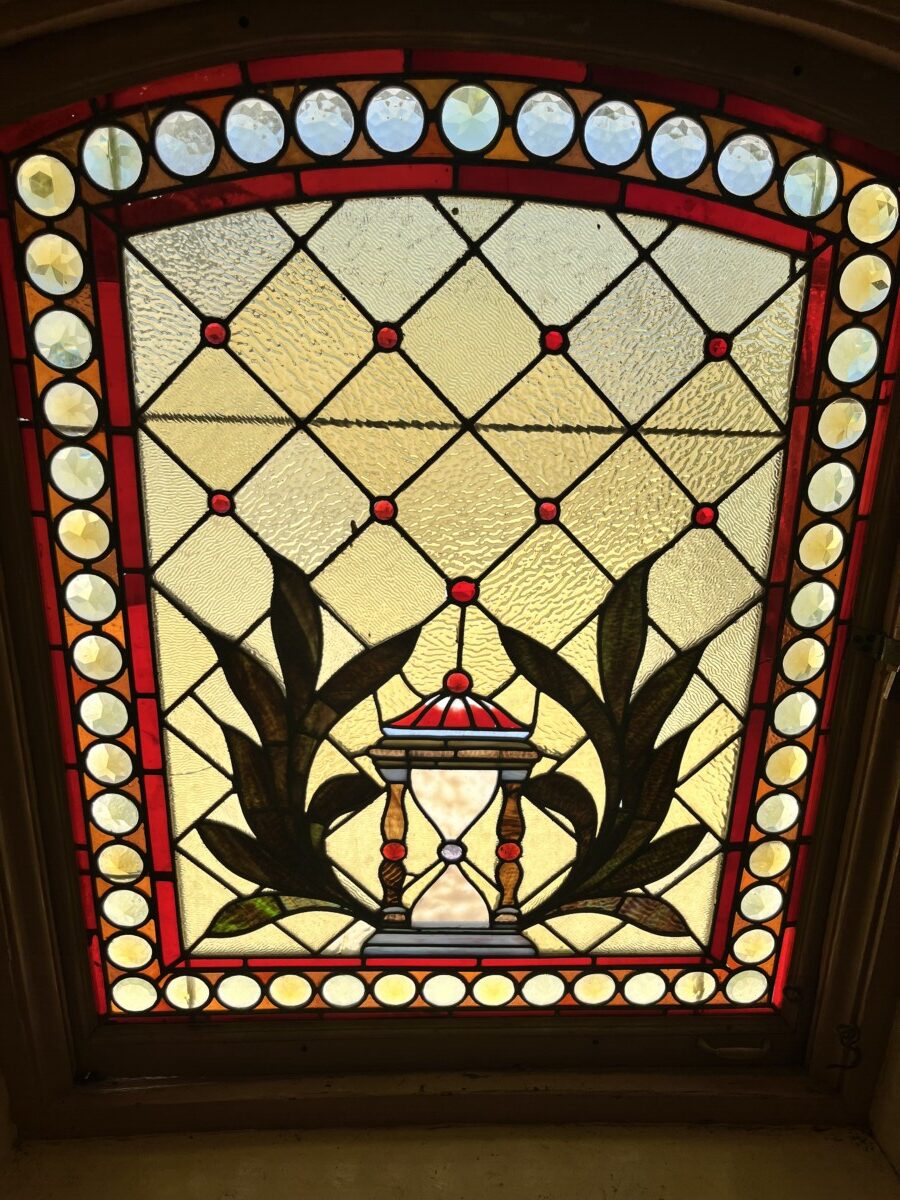
There are some local celebrities here, like Harvey Milk, the founders of Anchor Brewing and the “San Francisco twins” Marian and Vivian (I missed all of these!) I did find Chet Helms though, “father of the Summer of Love.”
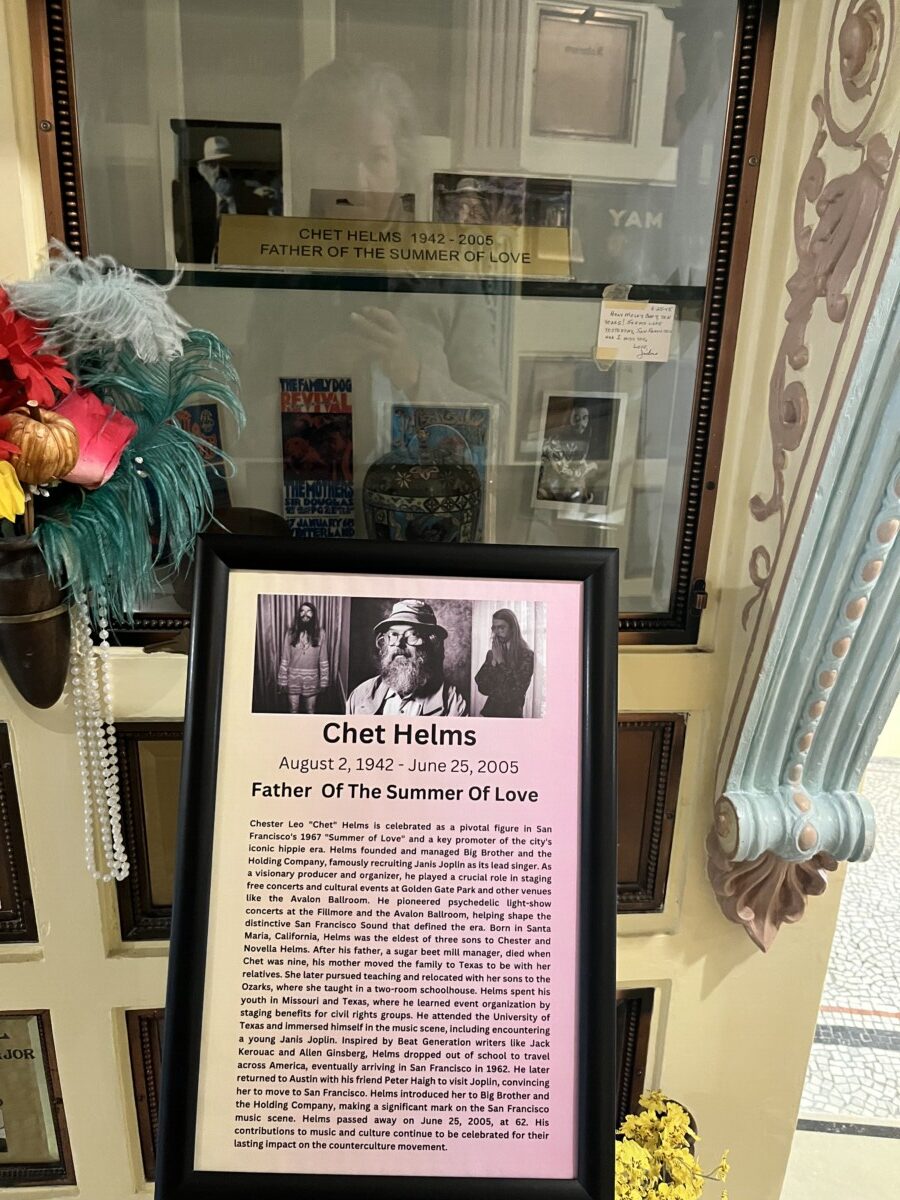
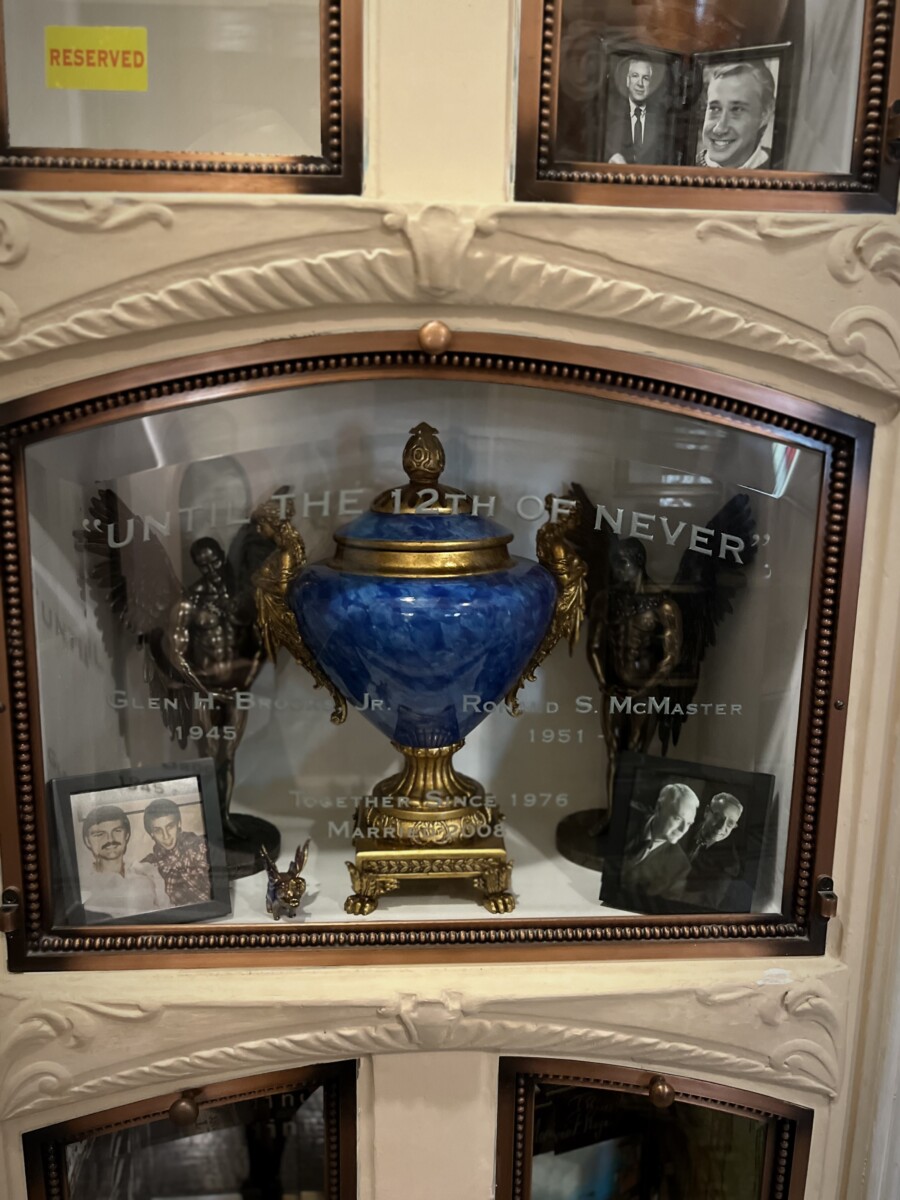
I highly recommend visiting! And don’t miss the Wind Phone near the front gate. According to Smithsonian Magazine, this disconnected telephone was created by a Japanese man so he could feel that he was talking to a deceased family member. Shortly thereafter, the Fukushima earthquake killed over 20,000 people. Itaru Sasaki invited his grieving neighbors to use the phone, and the concept quickly spread.
